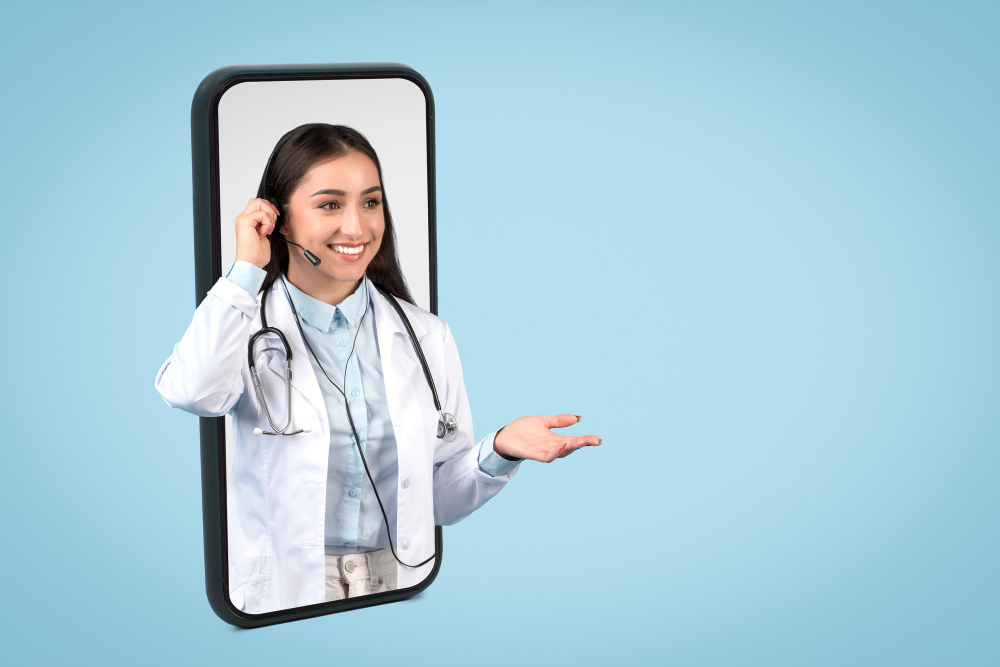How Telemedicine Can Improve Patient Outcomes in Rural Areas – A Technology-Driven Approach

Imagine a small town in Montana, where the nearest hospital is over 100 miles away. John, a 60-year-old farmer with diabetes, has been struggling with fluctuating blood sugar levels but postpones doctor visits due to travel constraints. Unfortunately, this scenario is not unique—millions of people in rural areas face limited access to healthcare, leading to higher mortality rates, unmanaged chronic conditions, and preventable hospitalizations.
The good news? Telemedicine is revolutionizing rural healthcare. By leveraging AI, mobile technology, cloud-based EMR/EHR systems, SaaS solutions, and enterprise tech, telemedicine is bridging the healthcare gap, enabling remote consultations, continuous monitoring, and real-time interventions. This article explores how modern technology is reshaping rural healthcare, ensuring that patients like John receive timely and effective medical care without geographical barriers.
Before diving into telemedicine-powered solutions, let's understand the critical challenges faced by rural populations:
1. Physician Shortages & Lack of Specialists
Over 60% of U.S. rural counties lack adequate healthcare providers.
Specialty care (cardiologists, endocrinologists, psychiatrists, etc.) is often unavailable in remote areas.
2. High Travel Burdens for Patients
Rural patients often travel 50+ miles for medical care.
Emergency response times are significantly delayed due to limited healthcare facilities.
3. Delayed Diagnosis & Chronic Disease Management
Rural residents face higher rates of chronic illnesses such as diabetes, heart disease, and COPD.
Preventable complications arise due to delayed check-ups and lack of continuous monitoring.
4. Health Inequity & Digital Divide
Lower internet connectivity in rural areas hampers virtual healthcare adoption.
Many rural clinics lack modern EMR/EHR systems, making remote patient coordination difficult.
Telemedicine eliminates geographic barriers, enabling real-time diagnosis, treatment, and follow-up care through virtual consultations, mobile monitoring, AI-driven diagnostics, and connected health platforms.
Let’s explore the key technological advancements driving this transformation.
1. AI-Powered Diagnostics & Decision Support
Artificial Intelligence (AI) is revolutionizing rural healthcare by enabling faster, more accurate diagnoses and predictive analytics for preventive care.
AI-Powered Chatbots & Virtual Assistants: Platforms like Ada Health and Babylon Health analyze symptoms, triage cases, and connect patients with remote physicians.
AI for Radiology & Imaging: Tools like Qure.ai and Zebra Medical Vision analyze medical scans remotely, allowing rural clinics to send X-rays or MRIs for AI-based interpretation.
Predictive Analytics for Disease Prevention: AI-driven platforms like Health Catalyst predict chronic disease risks based on patient data and suggest early interventions.
2. Mobile Health (mHealth) & Remote Patient Monitoring
Smartphones and wearable devices have made continuous health tracking a reality for rural populations.
Wearable Health Devices: Smartwatches (Apple Watch, Fitbit, Garmin) monitor vitals like heart rate, ECG, and blood oxygen levels, sending real-time alerts to doctors.
IoT-Enabled Medical Devices: Connected glucometers, BP monitors, and pulse oximeters transmit live health data to providers, enabling proactive interventions.
SMS-Based Healthcare Solutions: Rural patients without smartphones can receive health reminders, medication alerts, and follow-up messages via SMS.
3. Cloud-Based EMR/EHR Solutions for Rural Clinics
A major challenge in rural healthcare is the lack of centralized patient records. Cloud-based Electronic Medical Records (EMR)/Electronic Health Records (EHR) solve this issue.
Cloud-Integrated EHRs: Platforms like Epic Systems, Cerner Millennium, and Allscripts enable real-time data access for remote healthcare providers.
Interoperability Across Providers: Secure data-sharing capabilities ensure that rural patients’ medical history is available to telehealth specialists.
AI-Driven Clinical Decision Support (CDS): EMR-integrated AI helps doctors identify early signs of disease based on patient records.
4. SaaS Solutions for Virtual Consultations & e-Prescriptions
Telemedicine platforms enable rural patients to consult doctors remotely, reducing the need for travel.
Telehealth Platforms: SaaS solutions like Teladoc Health, Doxy.me, and Amwell offer secure video consultations, patient portals, and AI-driven symptom analysis.
e-Prescribing Systems: Platforms like DrFirst and Kareo allow doctors to prescribe medications digitally, with rural pharmacies receiving direct prescriptions.
Language & Accessibility Features: AI-powered real-time translation tools help non-English-speaking rural patients communicate with healthcare providers.
5. 5G & Edge Computing: Expanding Connectivity in Remote Areas
One of the biggest barriers to telehealth in rural areas is poor internet connectivity. However, 5G networks and edge computing are transforming digital healthcare accessibility.
5G Networks Reduce Latency: High-speed connectivity supports real-time video consultations, live health data transmission, and emergency telehealth response.
Edge Computing Enables Local Data Processing: AI-driven analytics at local edge devices (instead of centralized cloud centers) allow for faster diagnostics in rural clinics.
What is a Virtual Delivery Center (VDC)?
A Virtual Delivery Center (VDC) is a fully remote healthcare operations hub that enables hospitals, clinics, and health networks to manage telemedicine services efficiently.
How VDCs Enhance Telemedicine for Rural Healthcare
Telehealth Workforce Support:
Remote nurses and medical assistants handle patient intake, documentation, and virtual triaging.
AI-driven chatbots manage appointment scheduling and patient queries.
24/7 Remote Patient Monitoring & Alerting:
VDC teams use AI analytics to track patient vitals and flag high-risk cases.
Emergency escalations are handled in real-time by remote healthcare professionals.
Scalable Telemedicine Infrastructure:
VDCs manage EHR integrations, telehealth platform optimization, and cloud security.
They ensure interoperability between rural clinics and urban hospitals.
Reduced Operational Costs for Rural Health Clinics:
VDCs offer cost-effective alternatives to on-site IT teams, reducing administrative overhead.
Cloud-based telemedicine solutions eliminate hardware dependency, making remote care accessible.
Example:
A rural hospital network in Texas partnered with a VDC-powered telehealth provider to handle 70% of non-emergency consultations virtually, reducing patient travel times by 60% and improving chronic disease management outcomes.
Telemedicine is just getting started. Here’s what the next decade holds:
AI-Powered Virtual Hospitals: Fully remote diagnostic and treatment centers powered by AI-driven telehealth tools.
Blockchain for Medical Records: Secure, decentralized patient data management that ensures privacy while enabling universal access.
Augmented Reality (AR) for Remote Surgeries: Surgeons in urban centers guiding robotic-assisted procedures in rural hospitals.
Expansion of VDCs for Scalable Rural Healthcare: VDCs will become the backbone of cost-effective, large-scale telemedicine solutions.
For too long, rural communities have been left behind in healthcare access. But with AI, mobile health, cloud-based EMR/EHRs, SaaS telemedicine solutions, and Virtual Delivery Centers, the future is changing.
With technology bridging the gap, no patient—regardless of their location—should have to suffer from delayed care, undiagnosed conditions, or preventable complications.
Telemedicine is no longer an option; it is the future of equitable healthcare.

For modern telecom enterprises, delivering exceptional QoS is no longer optional—it’s a brand differentiator and a strategic lever for growth. Static provisioning models won’t cut it in a world of hyper-dynamic data usage.